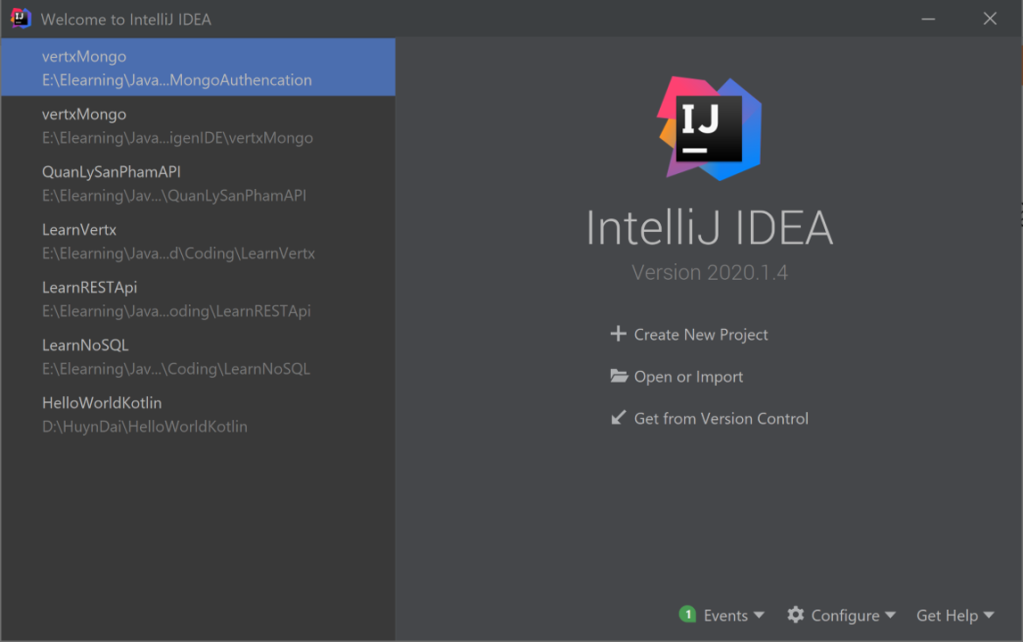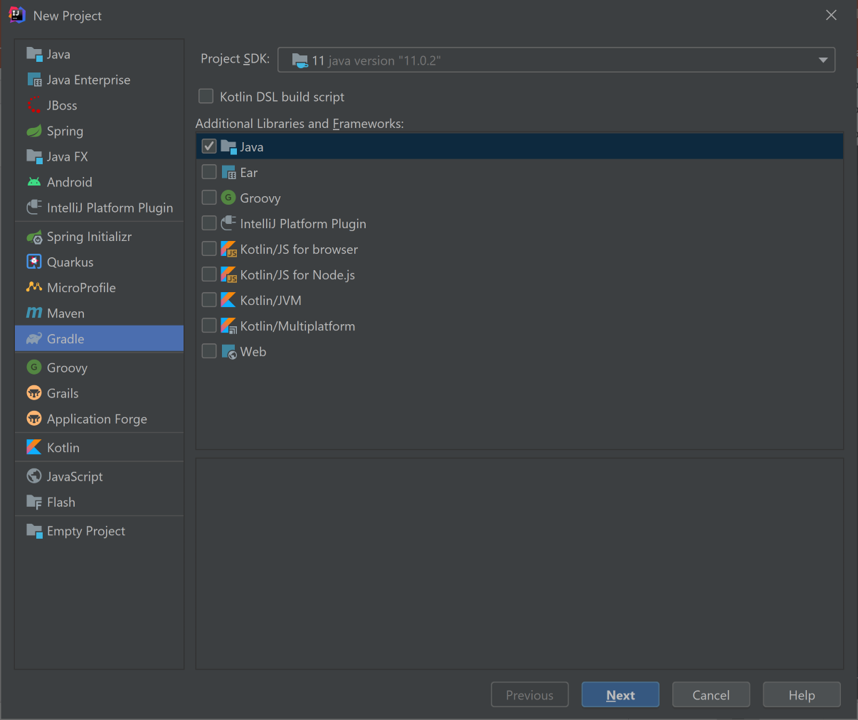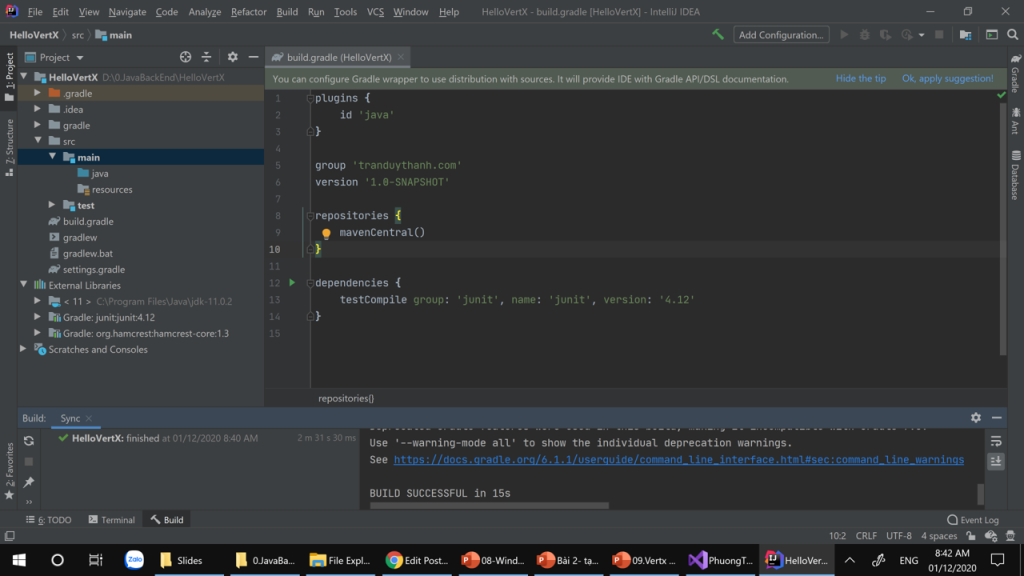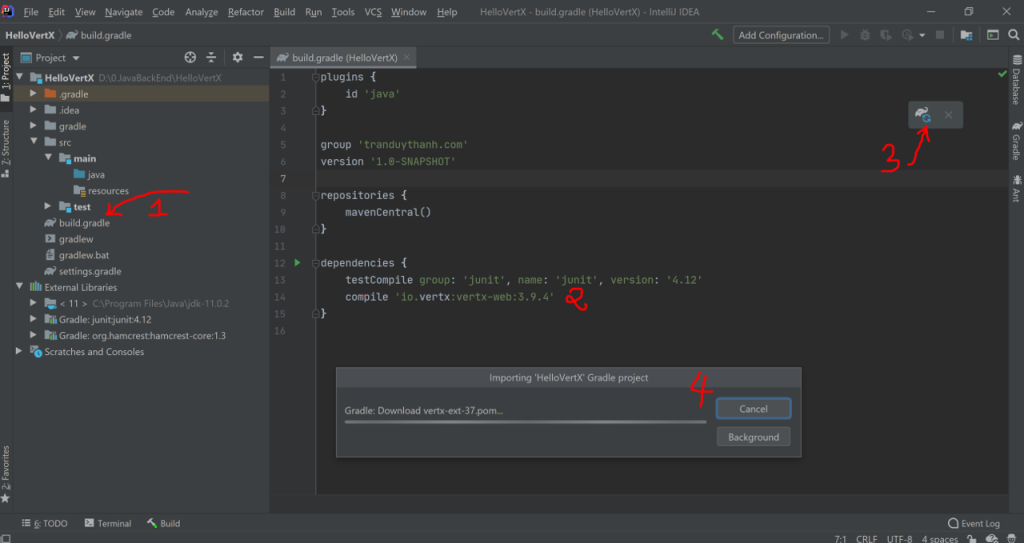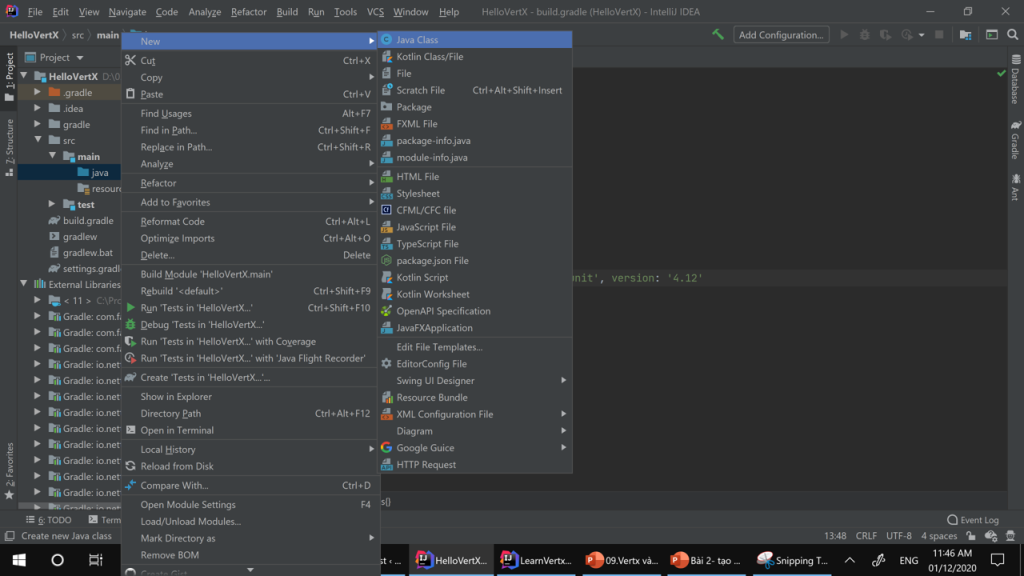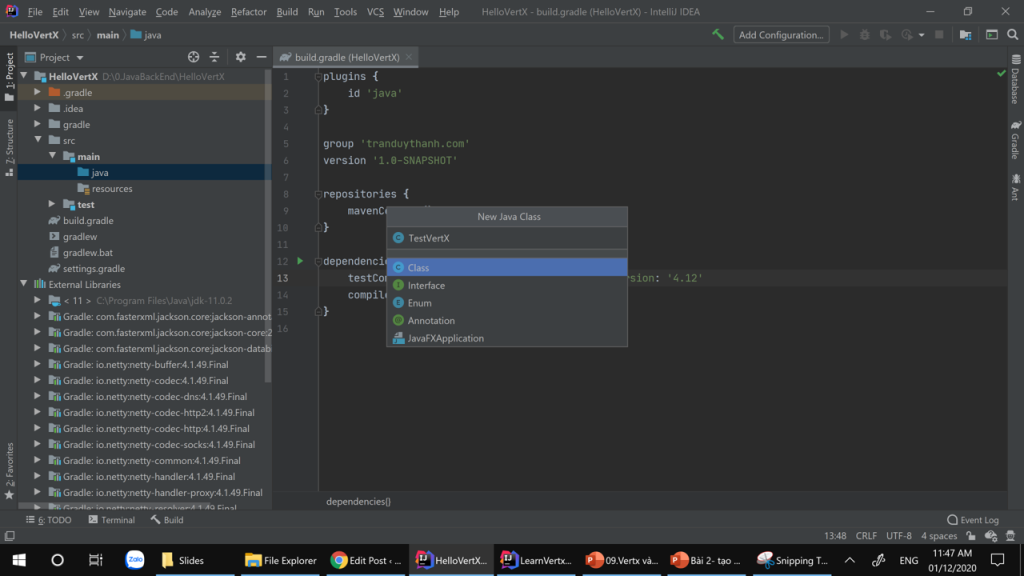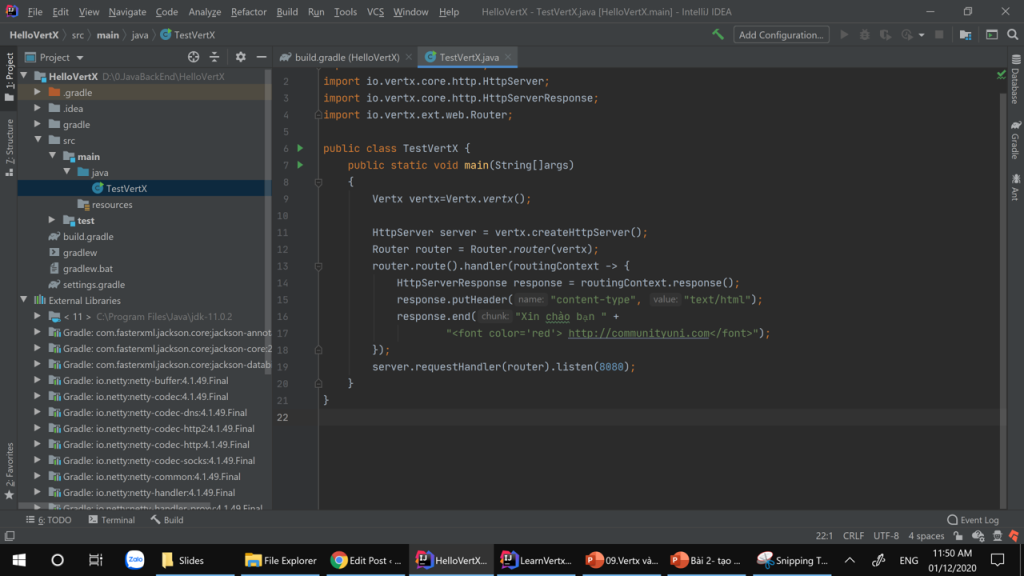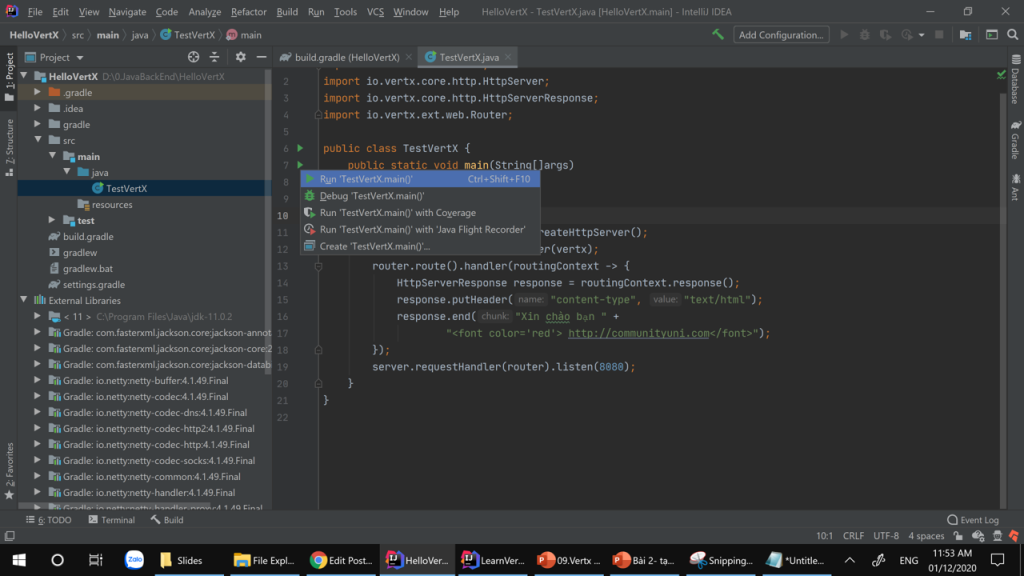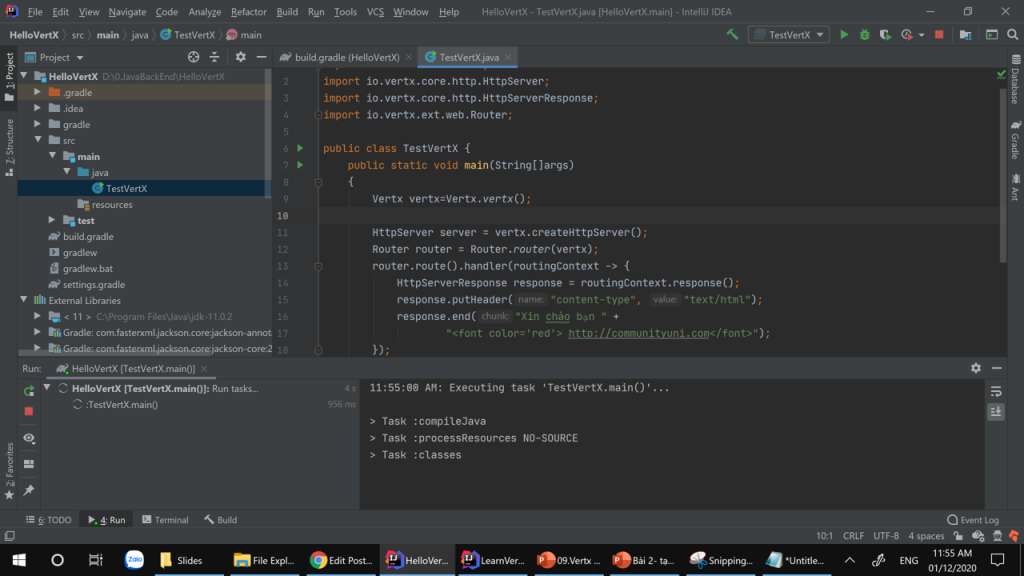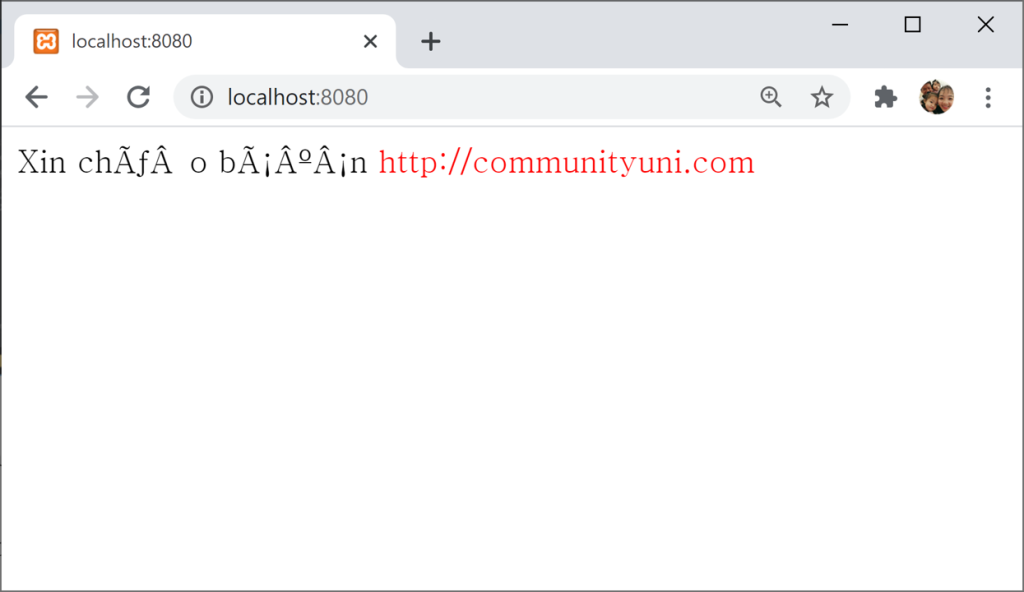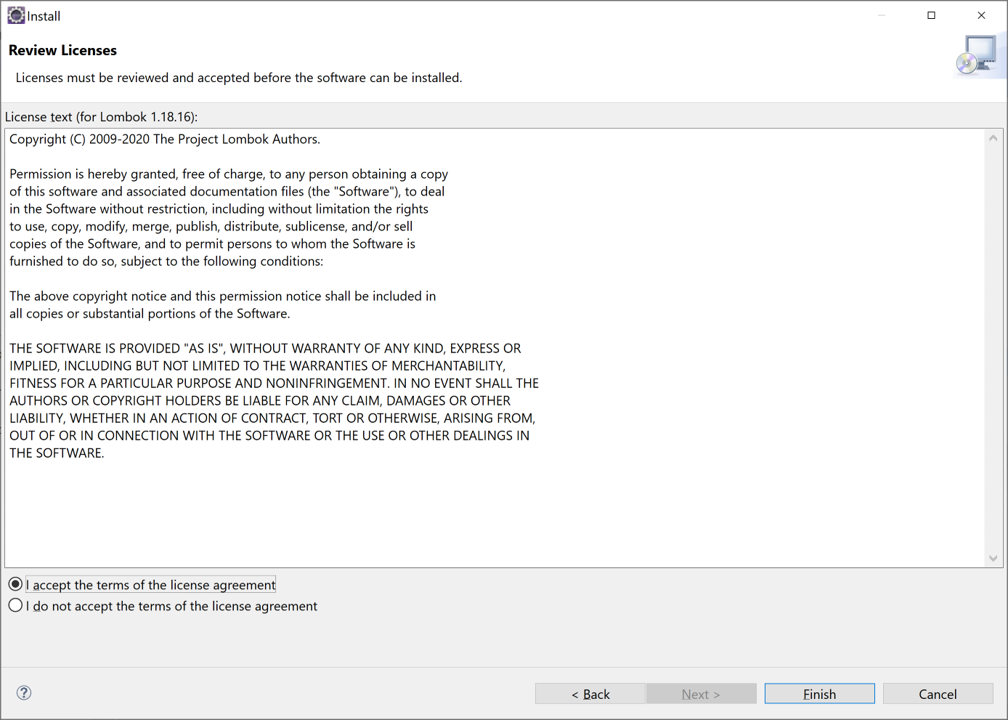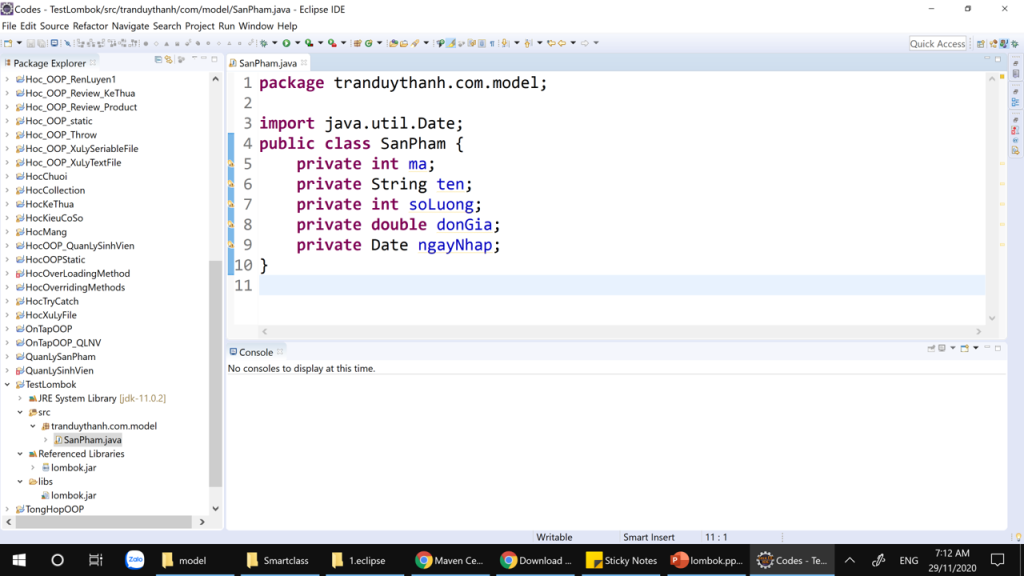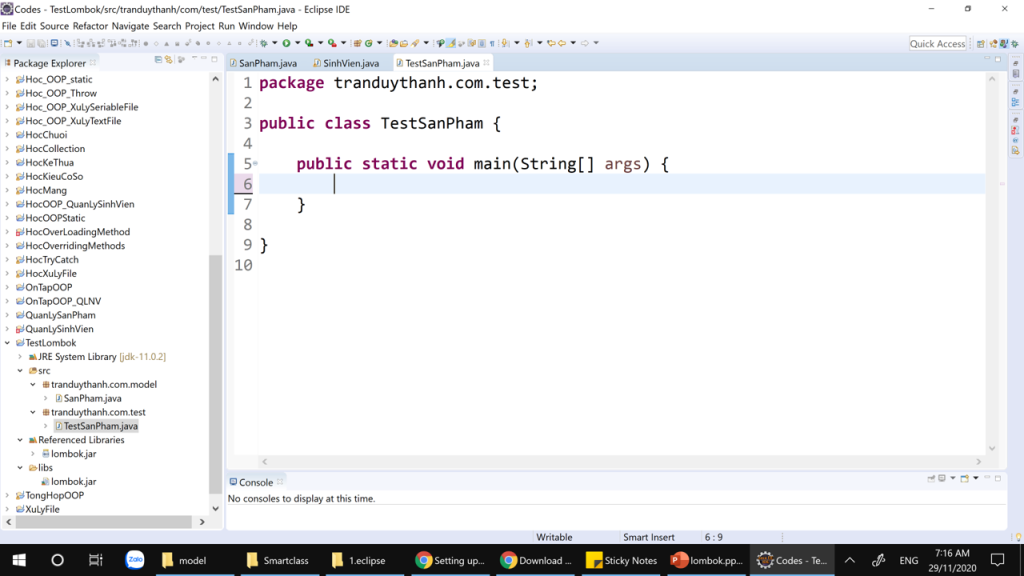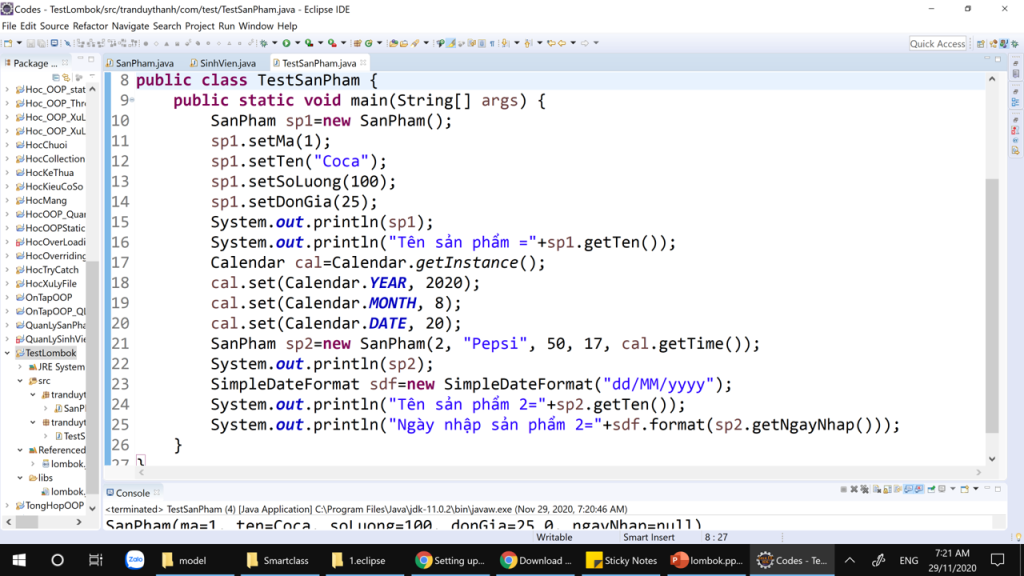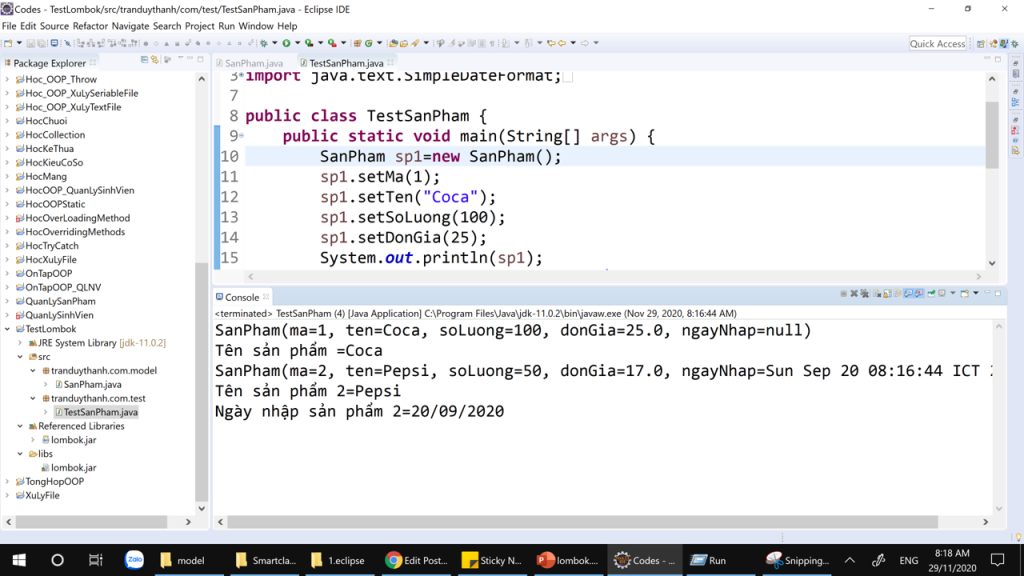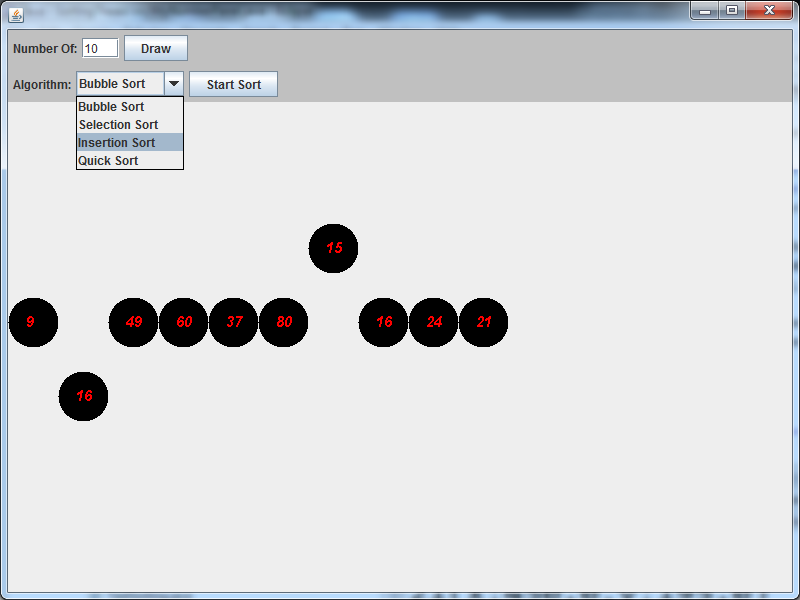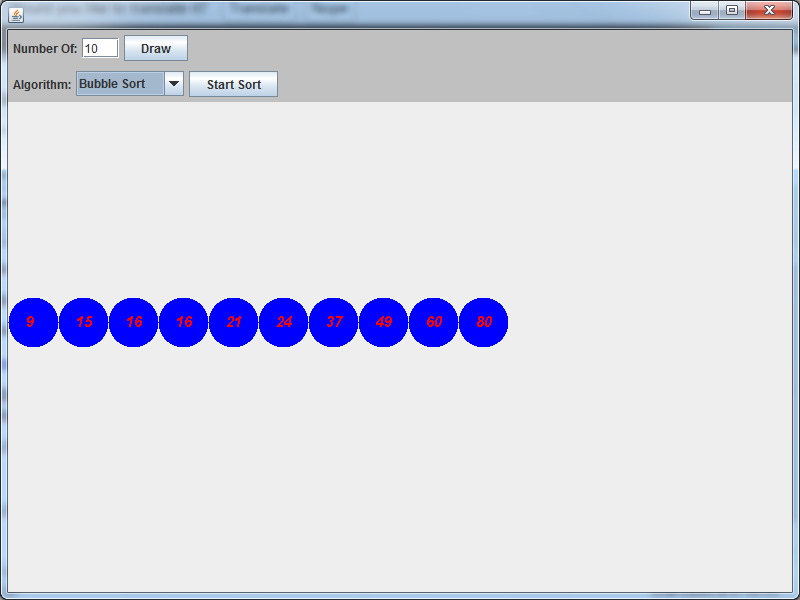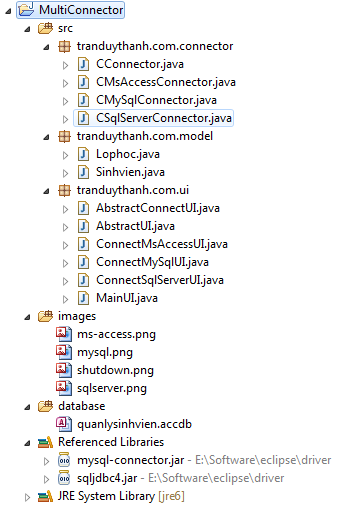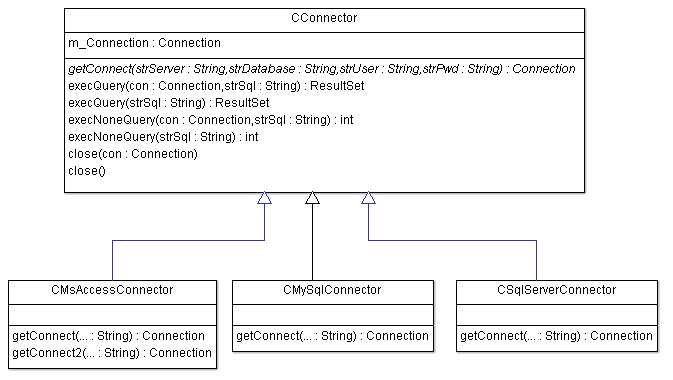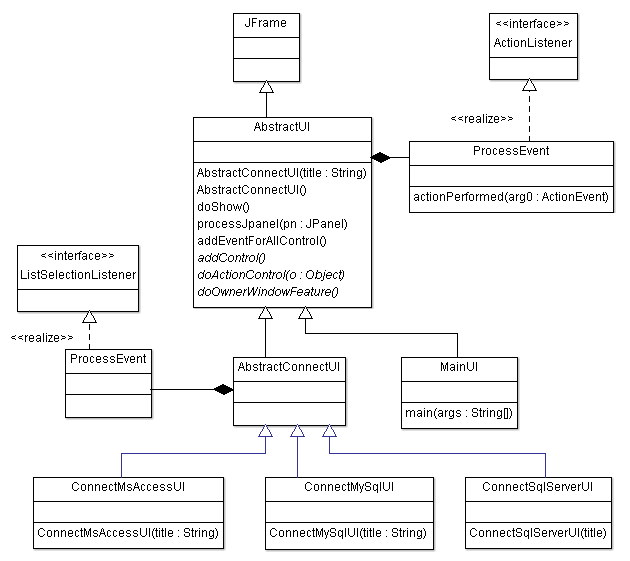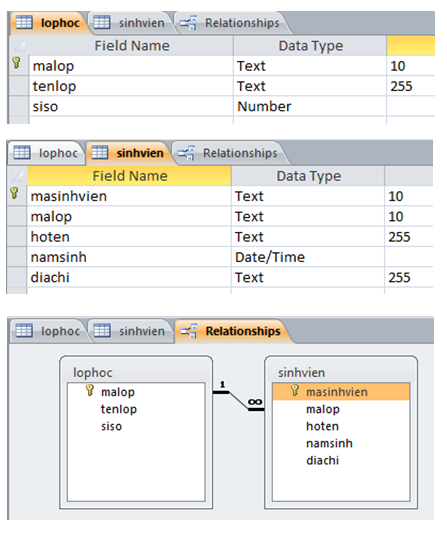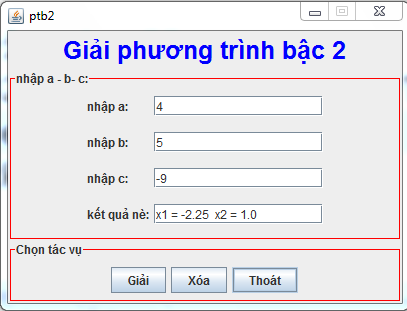| package tranduythanh.com.ui;importjava.awt.BorderLayout;
import java.awt.Color;
import java.awt.Container;
import java.awt.Dimension;
import java.awt.FlowLayout;
import java.awt.Font;
import java.awt.event.MouseEvent;
import java.awt.event.MouseListener;
import java.util.ArrayList;
import java.util.Vector;
import javax.swing.BorderFactory;
import javax.swing.BoxLayout;
import javax.swing.JButton;
import javax.swing.JComboBox;
import javax.swing.JLabel;
import javax.swing.JList;
import javax.swing.JPanel;
import javax.swing.JScrollPane;
import javax.swing.JSplitPane;
import javax.swing.JTable;
import javax.swing.JTextArea;
import javax.swing.JTextField;
import javax.swing.border.TitledBorder;
import javax.swing.event.ListSelectionEvent;
import javax.swing.event.ListSelectionListener;
import javax.swing.table.DefaultTableModel;
import tranduythanh.com.connector.CConnector;
import tranduythanh.com.model.Lophoc;
import tranduythanh.com.model.Sinhvien;
public abstract class AbstractConnectUI extends AbstractUI{
/**
*
*/
private static final long serialVersionUID = 1L;
protected static JList lstData;
protected JTable tblData;
protected DefaultTableModel dtmData;
protected JButton btnXoaLop,btnThemLop,btnSuaLop,btnThemSinhvien,btnLuuSinhvien,btnXoaSinhvien;
protected JTextField txtMasinhvien,txtTenSinhvien,txtNgaysinh,txtThangsinh,txtNamsinh;
protected JTextArea txtDiachi;
protected static JComboBox cboDanhsachlop;
protected static ArrayList<Lophoc> listLophoc;
protected static ArrayList<Sinhvien> listSinhvien;
protected static Lophoc lophocSelected;
protected static Sinhvien sinhvienSelected;
protected CConnector m_connector;
public AbstractConnectUI(String title)
{
super(title);
}
public AbstractConnectUI()
{
super(“Default …”);
}
@Override
public void addControl() {
// TODO Auto-generated method stub
JPanel pnBorder=new JPanel();
pnBorder.setLayout(new BorderLayout());
JPanel pnNorth=new JPanel();
JLabel lblTitle=new JLabel(“Quản lý Sinh Viên – Lớp Học”);
Font ftTitle=new Font(“arial”, Font.BOLD, 32);
lblTitle.setFont(ftTitle);
lblTitle.setForeground(Color.BLUE);
pnNorth.add(lblTitle);
pnBorder.add(pnNorth,BorderLayout.NORTH);
JPanel pnListLop=new JPanel();
JPanel pnListSinhvien=new JPanel();
JSplitPane slitPane=new JSplitPane(JSplitPane.HORIZONTAL_SPLIT, pnListLop, pnListSinhvien);
pnBorder.add(slitPane,BorderLayout.CENTER);
pnListLop.setLayout(new BorderLayout());
lstData=new JList();
TitledBorder cateborder=new TitledBorder(BorderFactory.createLineBorder(Color.RED), “Danh sách lớp học”);
pnListLop.setBorder(cateborder);
pnListLop.setPreferredSize(new Dimension(300, 0));
pnListLop.add(lstData,BorderLayout.CENTER);
JPanel pnListLopSouth=new JPanel();
btnThemLop =new JButton(“Thêm lớp”);
pnListLopSouth.add(btnThemLop);
btnSuaLop =new JButton(“Sửa lớp”);
pnListLopSouth.add(btnSuaLop);
btnXoaLop =new JButton(“Xóa lớp”);
pnListLopSouth.add(btnXoaLop);
pnListLop.add(pnListLopSouth,BorderLayout.SOUTH);
pnListSinhvien.setLayout(new BorderLayout());
JPanel pnSinhvienTitle=new JPanel();
JLabel lblSinhvienTitle=new JLabel(“Thông tin chi tiết”);
pnSinhvienTitle.add(lblSinhvienTitle);
pnListSinhvien.add(pnSinhvienTitle,BorderLayout.NORTH);
JPanel pnSinhvienTable=new JPanel();
pnSinhvienTable.setLayout(new BorderLayout());
pnListSinhvien.add(pnSinhvienTable,BorderLayout.CENTER);
dtmData =new DefaultTableModel();
dtmData.addColumn(“Mã Sinh Viên”);
dtmData.addColumn(“Tên Sinh Viên”);
dtmData.addColumn(“Ngày Sinh”);
dtmData.addColumn(“Lớp”);
dtmData.addColumn(“Địa chỉ”);
tblData=new JTable(dtmData);
JScrollPane sctblsinhvien=new JScrollPane(tblData);
pnSinhvienTable.add(sctblsinhvien,BorderLayout.CENTER);
JPanel pnSinhvienDetail=new JPanel();
pnListSinhvien.add(pnSinhvienDetail,BorderLayout.SOUTH);
pnSinhvienDetail.setLayout(new BoxLayout(pnSinhvienDetail, BoxLayout.Y_AXIS ));
JPanel pnLopList=new JPanel();
JLabel lblLopId=new JLabel(“Lớp học :”);
cboDanhsachlop=new JComboBox();
pnLopList.add(lblLopId);
pnLopList.add(cboDanhsachlop);
pnSinhvienDetail.add(pnLopList);
JPanel pnSinhvienId=new JPanel();
JLabel lblSinhvienId=new JLabel(“Mã sinh viên:”);
txtMasinhvien=new JTextField(20);
pnSinhvienId.add(lblSinhvienId);
pnSinhvienId.add(txtMasinhvien);
pnSinhvienDetail.add(pnSinhvienId);
JPanel pnSinhvienName=new JPanel();
JLabel lblSinhvienName=new JLabel(“Tên sinh viên:”);
txtTenSinhvien=new JTextField(20);
pnSinhvienName.add(lblSinhvienName);
pnSinhvienName.add(txtTenSinhvien);
pnSinhvienDetail.add(pnSinhvienName);
JPanel pnNgaysinh=new JPanel();
JLabel lblNgaysinh=new JLabel(“Ngày Sinh: “);
txtNgaysinh=new JTextField(3);
txtThangsinh=new JTextField(3);
txtNamsinh=new JTextField(4);
pnNgaysinh.add(lblNgaysinh);
JPanel pnNgaySinhChitiet=new JPanel();
pnNgaySinhChitiet.setLayout(new FlowLayout(FlowLayout.LEFT));
pnNgaySinhChitiet.add(txtNgaysinh);
pnNgaySinhChitiet.add(txtThangsinh);
pnNgaySinhChitiet.add(txtNamsinh);
JLabel lblNtnsFormat=new JLabel(“(dd-mm-yyyy)”);
lblNtnsFormat.setFont(new Font(“arial”,Font.ITALIC,10));
pnNgaySinhChitiet.add(lblNtnsFormat);
pnNgaysinh.add(pnNgaySinhChitiet);
pnSinhvienDetail.add(pnNgaysinh);
JPanel pnSinhvienDescription=new JPanel();
JLabel lblDescription=new JLabel(“Địa chỉ:”);
txtDiachi=new JTextArea(4, 20);
JScrollPane scare=new JScrollPane(txtDiachi);
pnSinhvienDescription.add(lblDescription);
pnSinhvienDescription.add(scare);
pnSinhvienDetail.add(pnSinhvienDescription);
JPanel pnButton=new JPanel();
btnThemSinhvien=new JButton(“Thêm SV”);
btnLuuSinhvien=new JButton(“Lưu SV”);
btnXoaSinhvien=new JButton(“Xóa SV”);
pnButton.add(btnThemSinhvien);
pnButton.add(btnLuuSinhvien);
pnButton.add(btnXoaSinhvien);
pnSinhvienDetail.add(pnButton);
cboDanhsachlop.setPreferredSize(txtMasinhvien.getPreferredSize());
lblLopId.setPreferredSize(lblSinhvienName.getPreferredSize());
lblDescription.setPreferredSize(lblSinhvienName.getPreferredSize());
lblNgaysinh.setPreferredSize(lblSinhvienName.getPreferredSize());
lblSinhvienId.setPreferredSize(lblSinhvienName.getPreferredSize());
Container con=getContentPane();
con.add(pnBorder);
lstData.addListSelectionListener(new ProcessEvent());
tblData.addMouseListener(new ProcessEvent());
}
@Override
public void doActionControl(Object o) {
// TODO Auto-generated method stub
if(o.equals(lstData))
{
showLopAndSinhvien();
}
else if(o.equals(tblData))
{
showChitietSinhvien();
}
}
private class ProcessEvent implements ListSelectionListener,MouseListener
{
@Override
public void valueChanged(ListSelectionEvent arg0) {
// TODO Auto-generated method stub
doActionControl(arg0.getSource());
}
@Override
public void mouseClicked(MouseEvent e) {
// TODO Auto-generated method stub
doActionControl(e.getSource());
}
@Override
public void mouseEntered(MouseEvent e) {
// TODO Auto-generated method stub
}
@Override
public void mouseExited(MouseEvent e) {
// TODO Auto-generated method stub
}
@Override
public void mousePressed(MouseEvent e) {
// TODO Auto-generated method stub
}
@Override
public void mouseReleased(MouseEvent e) {
// TODO Auto-generated method stub
}
}
@Override
public void doOwnerWindowFeature() {
// TODO Auto-generated method stub
setSize(800, 600);
setLocationRelativeTo(null);
setDefaultCloseOperation(DISPOSE_ON_CLOSE);
setResizable(false);
}
public abstract ArrayList<Lophoc> getListLop();
public abstract ArrayList<Sinhvien> getListSinhvienByIdLop(String malop);
public void showLopAndSinhvien()
{
Lophoc lh=(Lophoc ) lstData.getSelectedValue();
listSinhvien= getListSinhvienByIdLop(lh.getMalop());
lh.setList(listSinhvien);
lophocSelected=lh;
showListSinhvienIntoTable();
}
public void showListSinhvienIntoTable()
{
dtmData.setRowCount(0);
for(Sinhvien s: lophocSelected.getList())
{
Vector<String> vec=new Vector<String>();
vec.add(s.getMasinhvien());
vec.add(s.getHoten());
vec.add(s.getNamsinh().getDate()+”/”+(s.getNamsinh().getMonth()+1)+”/”+(s.getNamsinh().getYear()+1900));
vec.add(s.getMalop());
vec.add(s.getDiachi());
dtmData.addRow(vec);
}
}
public void showChitietSinhvien()
{
int row=tblData.getSelectedRow();
sinhvienSelected =listSinhvien.get(row);
txtMasinhvien.setText(sinhvienSelected.getMasinhvien());
txtTenSinhvien.setText(sinhvienSelected.getHoten());
txtDiachi.setText(sinhvienSelected.getDiachi());
txtNgaysinh.setText(sinhvienSelected.getNamsinh().getDate()+””);
txtThangsinh.setText((sinhvienSelected.getNamsinh().getMonth()+1)+””);
txtNamsinh.setText((sinhvienSelected.getNamsinh().getYear()+1900)+””);
cboDanhsachlop.setSelectedItem(lophocSelected);
}
public void updateLopList()
{
lstData.removeAll();
ArrayList<Lophoc> listlop=getListLop();
lstData.setListData(listlop.toArray());
lstData.updateUI();
cboDanhsachlop.removeAllItems();
for(Lophoc lh : listlop)
{
cboDanhsachlop.addItem(lh);
}
}
public void doComboboxSelected()
{
lophocSelected=(Lophoc) cboDanhsachlop.getSelectedItem();
}
} |
